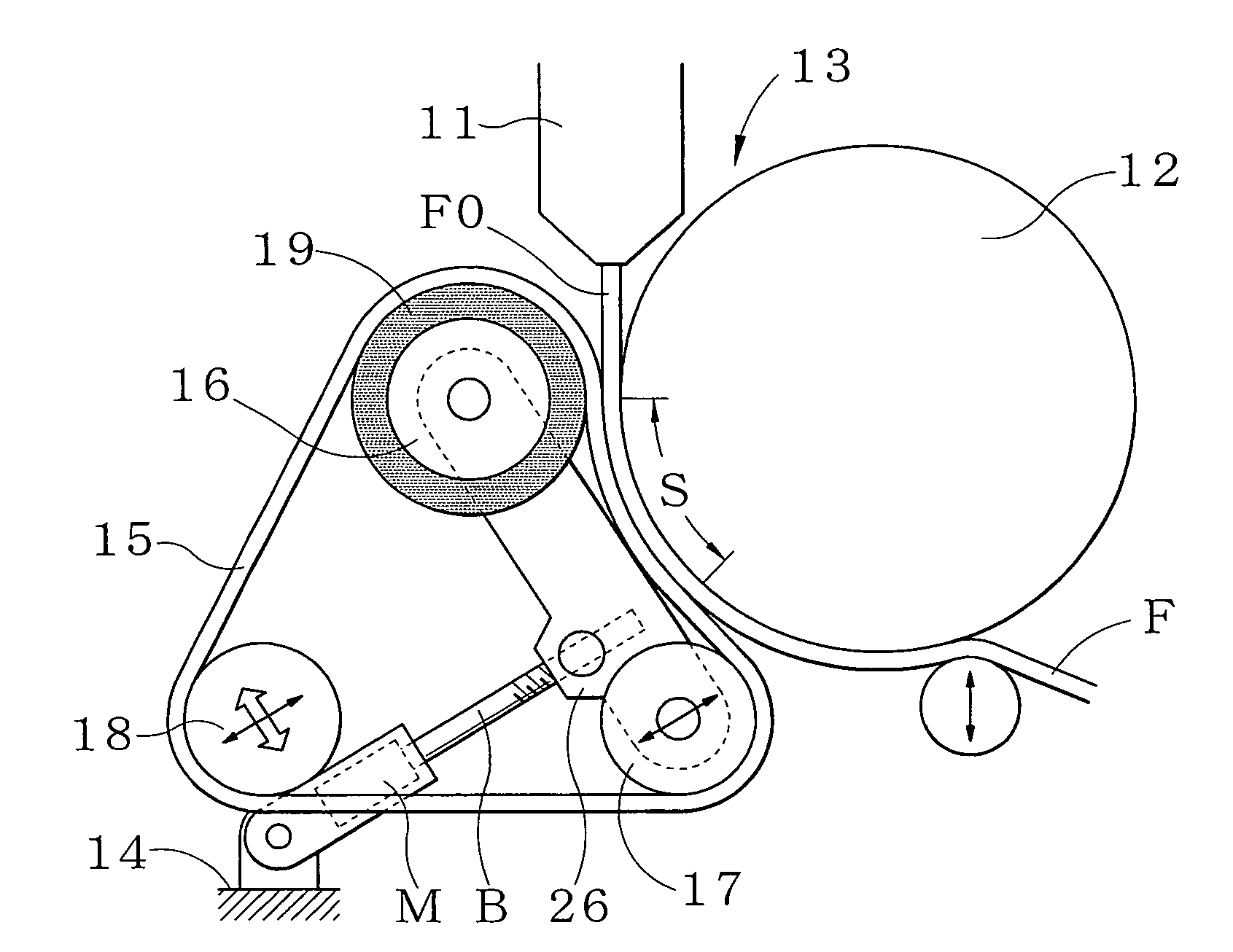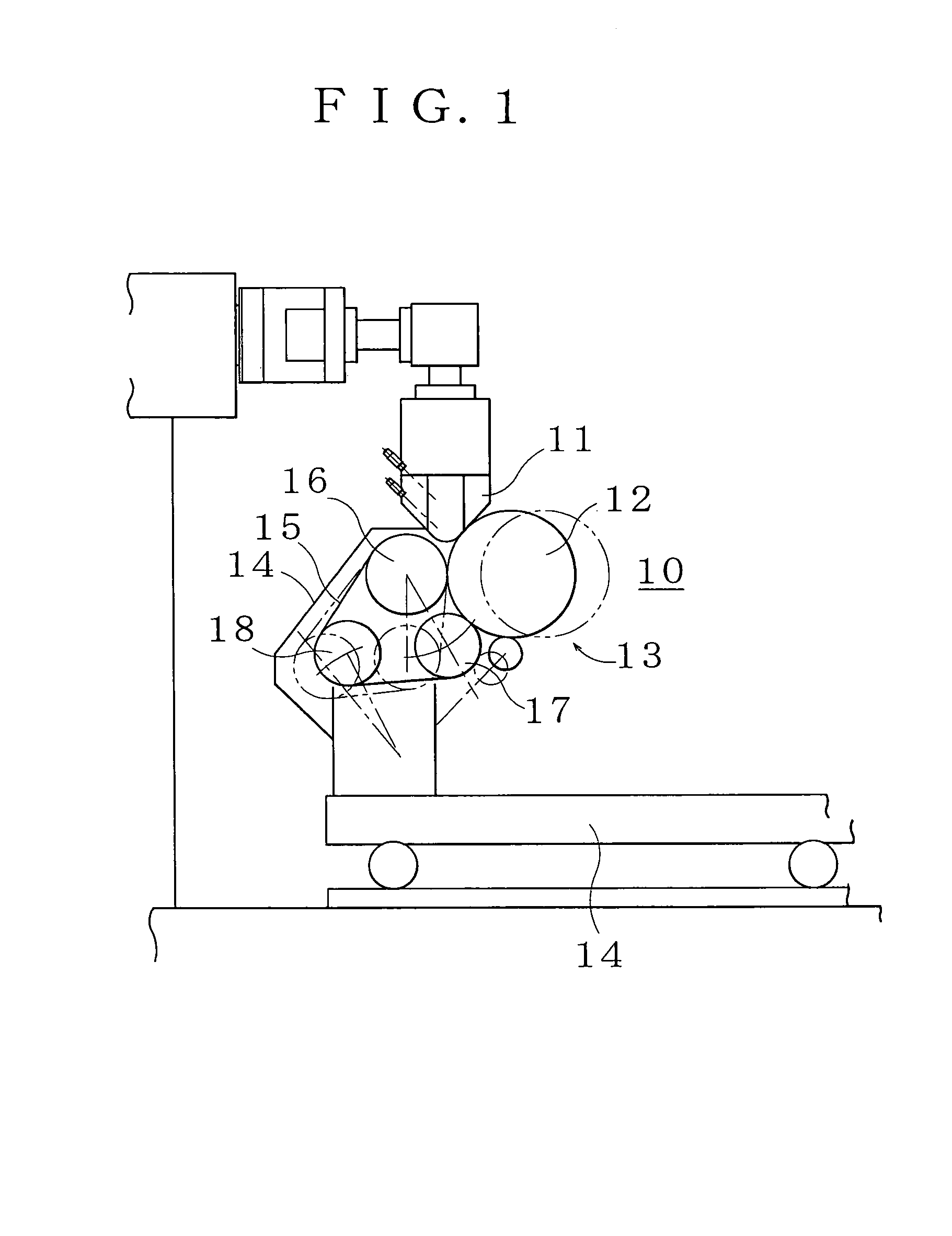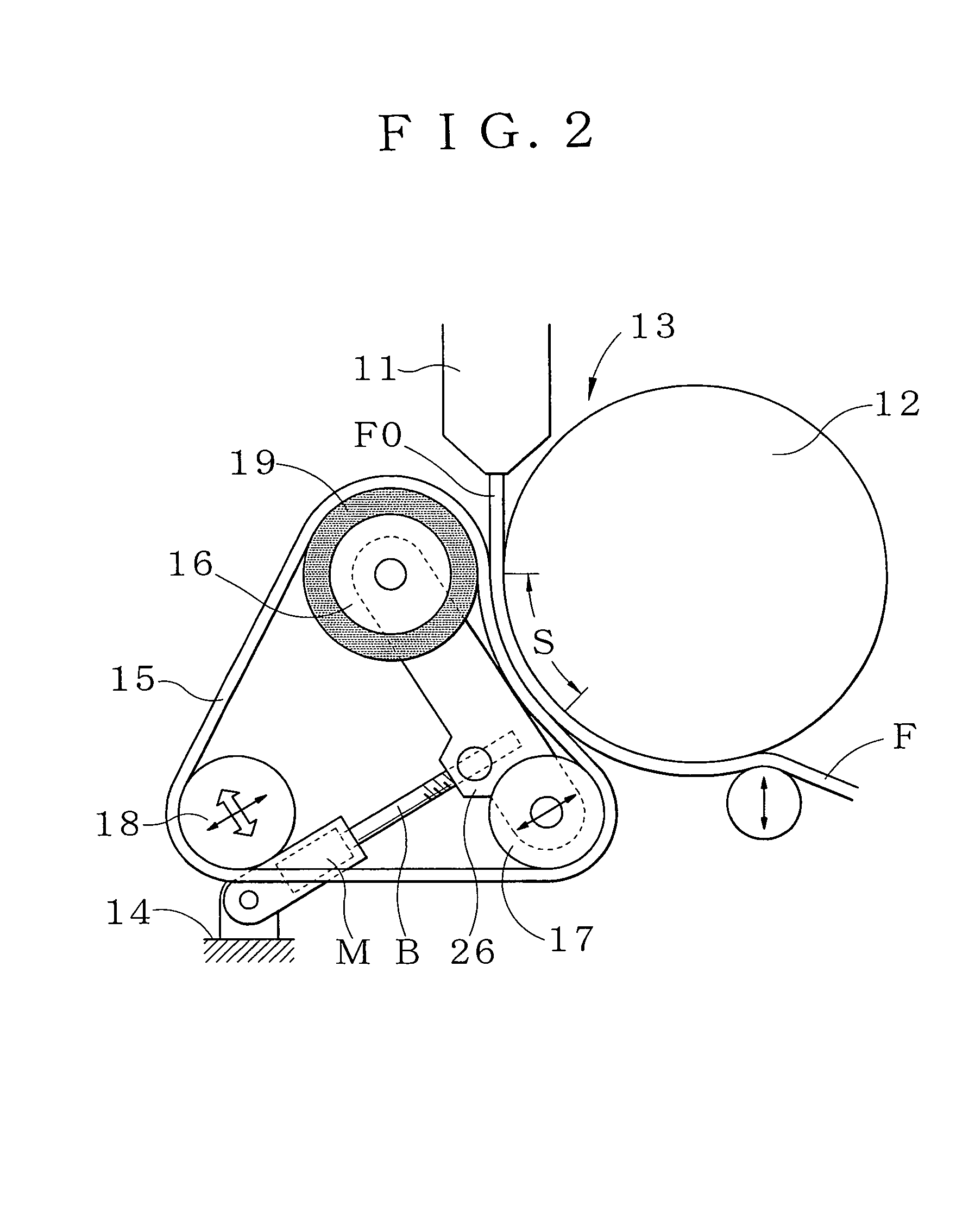Method and apparatus for producing thermoplastic synthetic resin sheet or film
a technology of synthetic resin and thermoplastic, which is applied in the direction of auxillary shaping apparatus, filament/thread forming, butter production, etc., can solve the problems of high cost of this production apparatus, and inability to meet the requirements of production, so as to achieve high workability and improve transparency
- Summary
- Abstract
- Description
- Claims
- Application Information
AI Technical Summary
Benefits of technology
Problems solved by technology
Method used
Image
Examples
example 1
[0041]Referring to FIG. 1 and FIG. 2, an apparatus 10 of the present invention is constructed as described below so that a synthetic resin material continuously supplied and fed from an extrusion casting die 11, i.e., a molten synthetic resin material FO heated to its heat deformation temperature, is subjected to cool-pressing with a casting mechanism 13 provided with a casting roller 12 to produce a glossy thermoplastic synthetic resin sheet or film F of a predetermined thickness.
[0042]The casting mechanism 13 comprises a casting roller 12 rotatably and horizontally supported by a frame 14; a flexible tubular metallic seamless casting sleeve 15 of which the outer surface is mirror finished, which rotates in contact with in an arcuate form a part of the outer peripheral surface of the casting roller 12 and nips and presses the synthetic resin material FO continuously supplied from the extrusion casting die 11 together with the casting roller 12; and a first support roller 16 and a s...
example 2
[0074]This example is used as a post treatment of the production apparatus indicated in the above example; and as indicated in FIG. 4, a cooling tank 30 for immersing a thermoplastic resin sheet or film F is provided close to the downstream side of the second support roller 17 facing the casting roller 12; and at the downstream side of the cooling tank 30, a draining blower 36 as a draining means for draining water on the cooled sheet or film F. At the further downstream side of the draining blower 36, is provided a sheet-correcting and -heating device 37 having a plurality of heating rollers 39 for a reheating treatment within a range of from −40° C. to +15° C. of a heat deformation temperature of the sheet or film F to a degree such that a thermal strain of the sheet or film F can be corrected. The cooling tank 30 is provided on the frame 14 so that the cooling tank is movable upward and downward, the sheet-correcting and -heating device 37 is provided on another frame 27 which is...
PUM
| Property | Measurement | Unit |
|---|---|---|
| diameter | aaaaa | aaaaa |
| thickness | aaaaa | aaaaa |
| temperature | aaaaa | aaaaa |
Abstract
Description
Claims
Application Information
 Login to View More
Login to View More - R&D
- Intellectual Property
- Life Sciences
- Materials
- Tech Scout
- Unparalleled Data Quality
- Higher Quality Content
- 60% Fewer Hallucinations
Browse by: Latest US Patents, China's latest patents, Technical Efficacy Thesaurus, Application Domain, Technology Topic, Popular Technical Reports.
© 2025 PatSnap. All rights reserved.Legal|Privacy policy|Modern Slavery Act Transparency Statement|Sitemap|About US| Contact US: help@patsnap.com



